A PROHIBITION WRECK ON ORANGE ST (1922)
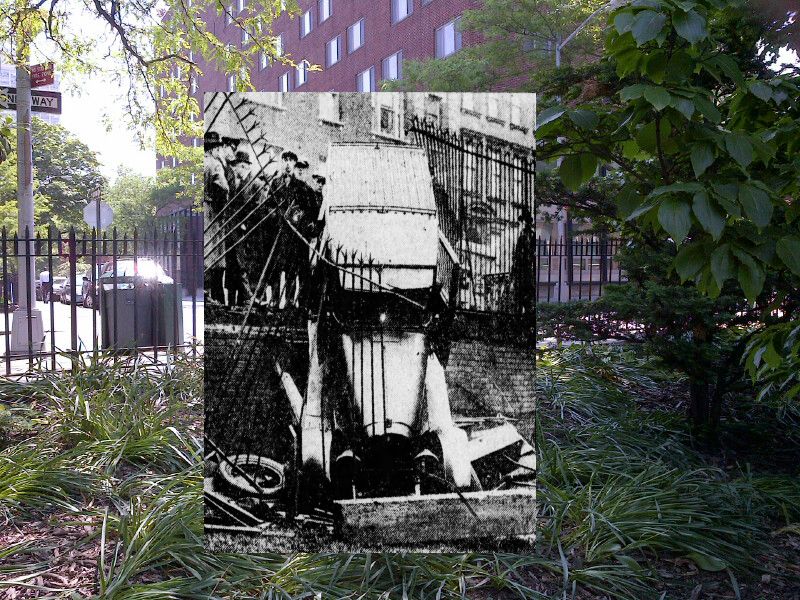
Brownstone Detectives investigates the history of our clients’ homes.
The story you are about to read was composed from research conducted in the course of one of those investigations.
Do you know the history of YOUR house?
********************************************************************************************************************************
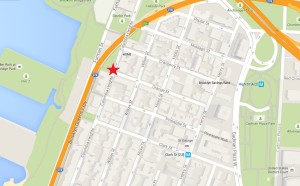
“Tearing through Orange st. with the throttle wide open, in the early hours this morning, a big limousine of expensive make crashed into an electric light pole at the foot of the street, ricocheted against a fire hydrant which it completely demolished, continued on its course and crashed through an eight-foot picket fence.”
A flirtation at a dance, a stolen vehicle, a crash, the removal of a set of license plates, and a hasty departure from the scene of the accident was further described in the 12 December 1922 newspaper article.
“CRASH WAKENS HEIGHTS”
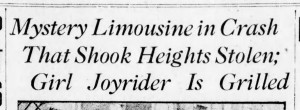
“A blood-stained hand pushed open the door of the limousine. Two gory men stepped out,” wrote the reporter.
The two men “then turned and assisted a woman out of the car. They climbed over the wall to the street and stood huddled in a little group as if debating what to do.”
After a few minutes of dazed waiting, the three crash victims walked quickly up Orange Street. Then, a few minutes later, one of the men was observed returning and making “a vain effort to wrench the rear license plate from the car.” All that he succeeded in doing, though, was leaving “a number of bloody but well-defined fingerprints on the license number.”
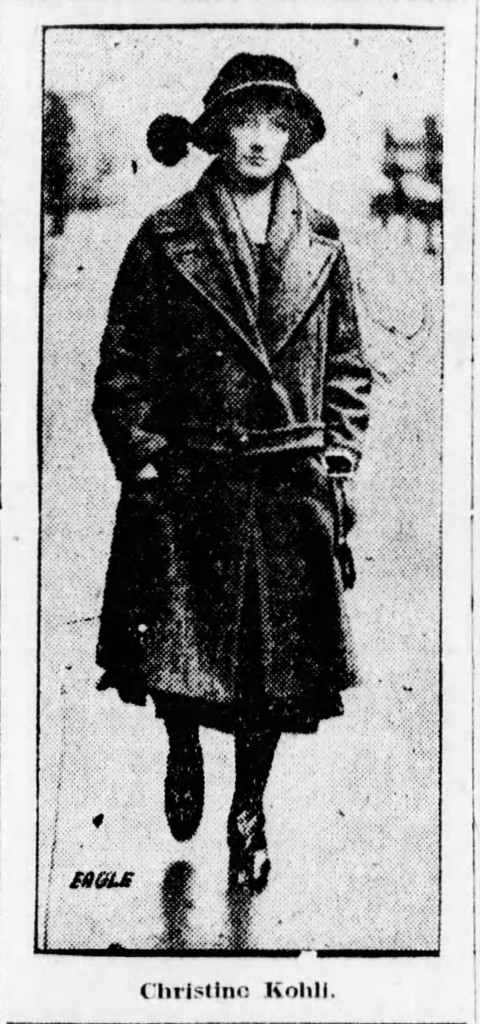
A WOMAN APPEARS
Early the next day, a “pretty young woman” walked into Police Headquarters. Surrendering herself to the authorities, she gave her name as Miss Christine Kohli, 20, of 667 Coney Island Ave.
She said that she did not know the names of the two men who were with her in the car and that she had met them through “a flirtation at a dance.” Her presence in the car, she swore, was inspired by the innocent desire for a joy ride.
Ms. Kohli was questioned the rest of the day and gave enough information to police that they were certain that the stolen car was used as a “booze runner.” They also determined who the men involved, from her descriptions, had a reputation of dealing in contraband liquors and have, of late, been engaged in “some mysterious business.”
THE “MYSTERY LIMO”
The police, after examining the vehicle, declared that “the machine was unquestionably a stolen
vehicle.
“The motor number is fictitious. The body number is also a fake,” stated Detective Benjamin Christie of the Motor Squad.
Records at the licence Bureau showed that the license plates had been issued to Thomas F. Cordell of 50 St. Mark’s Place, “for a seven-passenger touring car of another make.” Cordell, when questioned, stated that his car had been in “dead storage” for some time. When viewed, the plates to his car were, indeed, missing.
The “mystery limo” was “hauled out of the hole” the afternoon of the crash. It was parked on Poplar Street where it attracted “much attention.”
KOHLI A REFORMATORY SCHOOL DROP-OUT?
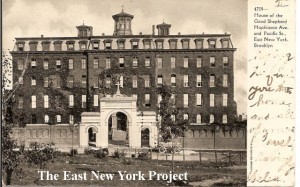
A “Christina Kohli” was identified in a 1920 census as living at a “Juvenile Delinquent Reformatory” for girls – House of the Good Shepherd – located on Hopkinson Avenue (now Thomas Boyland Street) at Pacific Street. It was listed in local directories as a reformatory for “erring females.”
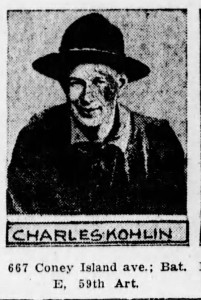
The home address that she gave the police was, indeed, correct, because 1) the police identified a taxi driver who had driven Ms. Kohli and her two accomplices to that location on the night of the accident, and 2) because a Kohli relative (probably her brother), was pictured in the newspaper and listed as being from 667 Coney Island Avenue (complete with an incorrect spelling of the last name).
By 1920, when the Federal census was taken, Ms. Kohli would have been 17 years old and may have found herself in enough trouble that she had been sent to this institution. Also, she was not listed on the census as living with her family at 667 Coney Island Avenue. This cannot be definitively concluded, of course, but there is a good case to be made.
But if so, then it can be deduced that Ms. Kohli had graduated, by the time of the accident, from the juvenile delinquent institution – but not from being an “erring female.”
———————————————————————————————————————–
 Brownstone Detectives is an historic property research agency. Our mission is to document and save the histories of our clients’ homes. From our research, we produce our celebrated House History Books and House History Reports. Contact us today to begin discovering the history of your home.
Brownstone Detectives is an historic property research agency. Our mission is to document and save the histories of our clients’ homes. From our research, we produce our celebrated House History Books and House History Reports. Contact us today to begin discovering the history of your home.